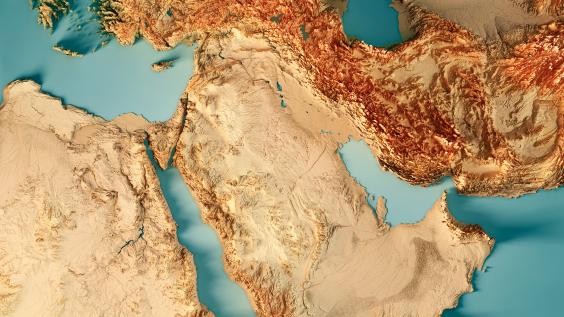The Mythology of the Sectarian Middle East

Table of Contents
Author(s)
Ussama Makdisi
Professor of History and Arab-American Educational Foundation Chair in Arab Studies, Department of History, Rice UniversityTo access the full paper, download the PDF on the left-hand sidebar.
The idea of a “sectarian” Middle East causes far more obfuscation than illumination. Sectarianism is often characterized as the violent and illiberal manifestation of competing, age-old antagonistic religious identities in the region. This characterization is rooted in a static, one-dimensional understanding of identity, so that being Sunni and Shi‘i, for example, are assumed to be constants etched into the fabric of the past. Communal identities, however, have always represented dynamic and highly contextual understandings of self and other. They have been riven by innumerable schisms, and have also undergone repeated redefinitions throughout their long histories. Thus, the invocation of sectarianism as a category of analysis for understanding the Middle East misleads; it conflates a religious identification with a political one, and it ignores the kinship, class, and national and regional networks within which sectarian self-expression has invariably been enmeshed.
The historian Bruce Masters, for example, insists that “as long as religion lay at the heart of each individual’s worldview, the potential for society to fracture along sectarian lines remained.” Between the potentiality for sectarian violence and its actuality in the modern Middle East, however, lies a series of contingent, constrained and fateful choices, moments, and turning points. These contingences have almost always involved an array of foreign and domestic interests and actors working in tandem. The notion, therefore, that the inhabitants of the Middle East live in peculiar “sectarian” societies or inhabit “sectarian” mental worlds puts the cart before the horse. It naturalizes sectarian political culture rather than interprets it critically.
More pointedly, assumptions about a deep sectarianism ignore the degree to which, for example, Lebanon’s infamous sectarian polity, whereby public office is parceled out along sectarian lines, is a modern imperial and elitist innovation. Inaugurated in 1861 as a sign of Ottoman modernization and through a joint Ottoman-European protocol, political sectarianism was consolidated in the new post-Ottoman Lebanese state under French colonialism. Most of all, to assume sectarianism exists as an unvarying and age-old historic truth begs the question as to why “sectarianism” was first identified as a modern problem in the nineteenth-century Ottoman Empire and in the post-Ottoman Middle East at exactly the moment when the questions of equality, coexistence, citizenship, imperialism, and nationalism became salient around a European-dominated world.
This material may be quoted or reproduced without prior permission, provided appropriate credit is given to the author and Rice University’s Baker Institute for Public Policy. The views expressed herein are those of the individual author(s), and do not necessarily represent the views of Rice University’s Baker Institute for Public Policy.


